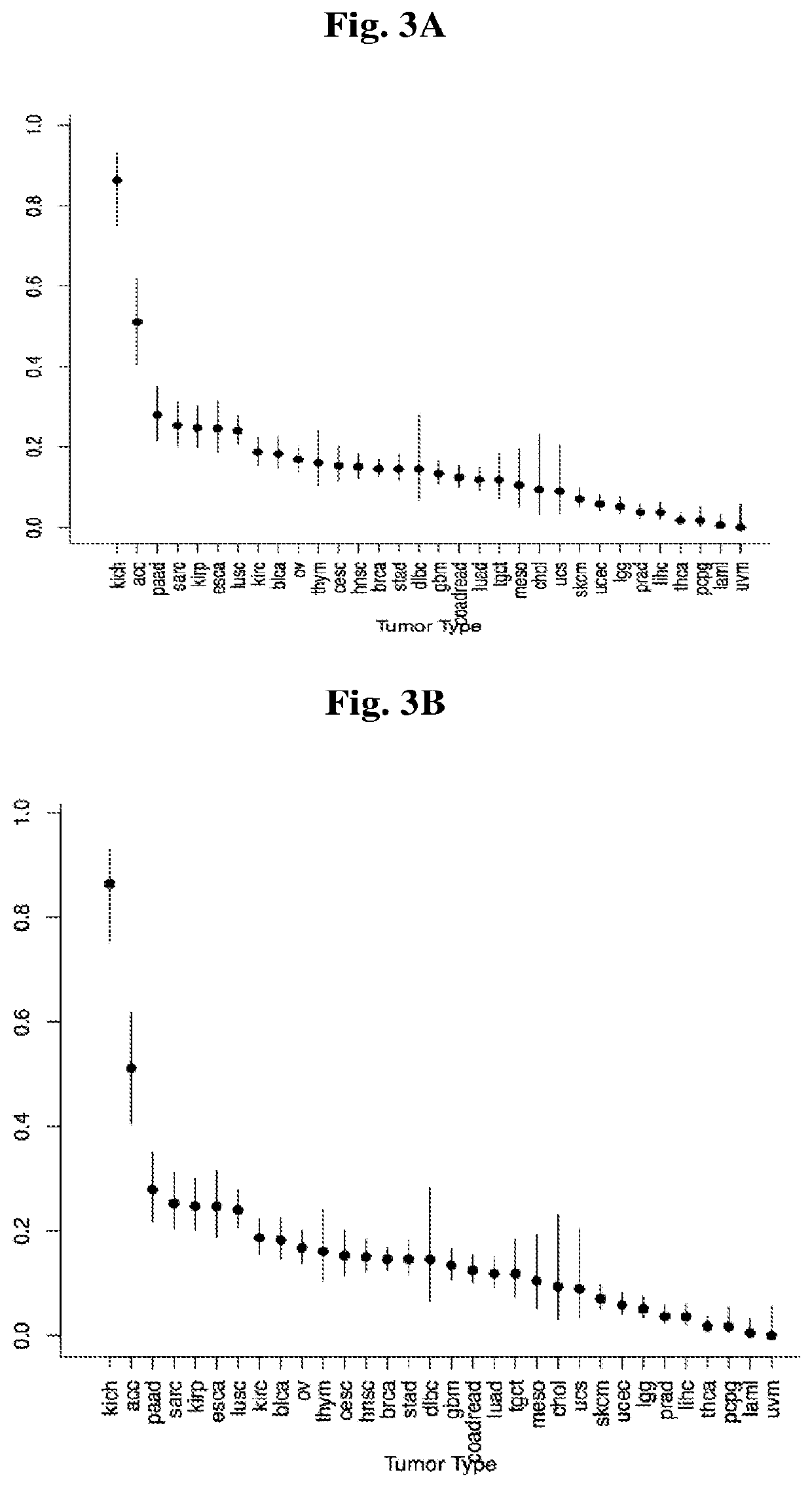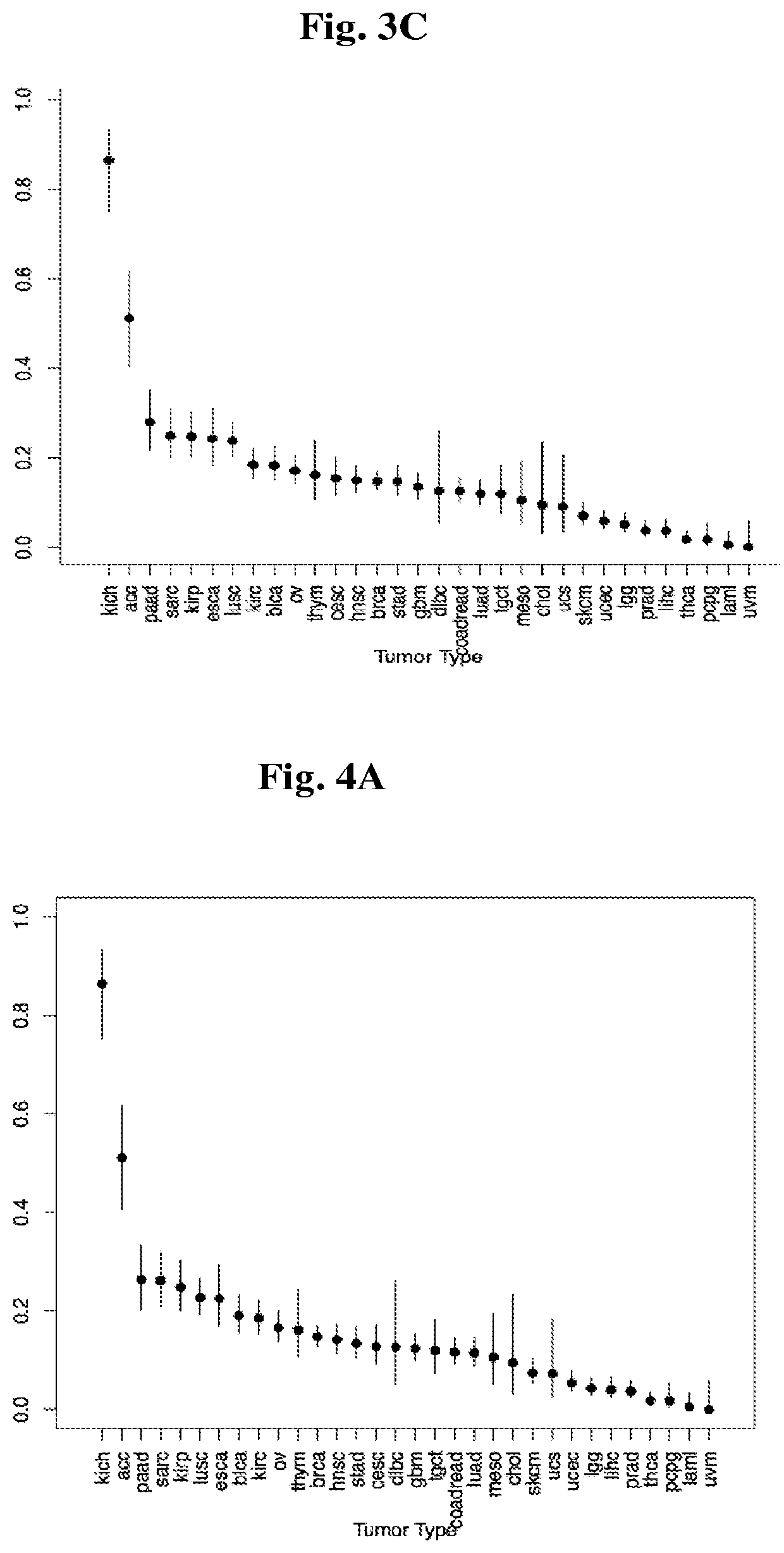Universal platform for car therapy targeting a novel antigenic signature of cancer
a technology of cancer immunotherapy and car therapy, which is applied in the direction of immunoglobulins against animals/humans, drug compositions, peptides, etc., can solve the problems of inability to show benefit, inability to reduce tumor reactivity, and inability to identify suitable targets for cancer immunotherapy via adoptive cell transfer
- Summary
- Abstract
- Description
- Claims
- Application Information
AI Technical Summary
Benefits of technology
Problems solved by technology
Method used
Image
Examples
example 1
de identification of polymorphic genes that encode expressed cell-surface proteins and undergo loss of heterozygosity (LOH)
[0169]In order to identify genes which can serve as iCAR target, the following requirements were employed:[0170]1. The gene encodes a transmembrane protein—therefore having a portion expressed on the cell surface to allow the iCAR binding.[0171]2. The gene has at least two expressed alleles (in at least one ethnic population checked)[0172]3. The allelic variation found for that gene causes an amino acid change relative to the reference sequence in an extracellular region of the protein.[0173]4. The gene is located in a chromosomal region which undergoes LOH in cancer.[0174]5. The gene is expressed in a tissue-of-origin of a tumor type in which the corresponding region was found to undergo LOH.
Allele Identification:
[0175]The Exome Aggregation Consortium database (ExAC, at exac.broadinstitute.org) was used as an input to the analysis. The ExAC database is a compil...
example 2
eterozygosity of HLA Class-I Proteins
[0193]HLA class-I genes were chosen as the first set of potential iCAR targets due to their already known characteristics: cell-surface proteins expressed from both alleles, a wide tissue distribution, a high level of polymorphism, and documented LOH in tumors as a mechanism of tumor escape. Hence, we started the analysis by determining the rate at which HLA class-I proteins are lost in various tumor types. We analyzed these copy number profiles for the presence of loss-of-heterozygosity at the genomic loci of HLA-A, B and C, listed in Table 4.
TABLE 4HLA-I genomic lociGeneProteinChromosomeStart PositionEnd PositionHLA-AHLA-A62994126029945884HLA-BHLA-B63135387231357188HLA-CHLA-C63126874931272130
[0194]SNP arrays data, across thousands of tumor samples, publicly available from the TCGA, can serve as a source for copy number calculation and was used to predict HLA LOH frequency across all tumor types available on the public NIH TCGA data portal (http...
example 3
ochemical Verification of LOH and Specificity of Allele Specific Antibodies
[0198]Several pairs of preserved and lost allelic variants identified in different tumors are selected and their polypeptide products will serve for the generation of variant-specific mAbs. The discriminatory power of candidate mAbs are assayed by double staining and flow cytometry experiments or immunohistochemistry, as follows:
IHC Protocol
Allele-Specific Anti-HLA Antibodies:
[0199]
AntibodyManufacturerAnti-human HLA-A2 APC (BB7.2)eBiosciencesAnti-human HLA-A2 PE-cy7 (BB7.2)eBiosciencesAnti-human HLA-A3 FITC (GAP A3)eBiosciencesAnti-human HLA-A3 PE (GAP A3)eBiosciencesmouse anti-human HLA-B7-PE (BB7.1)MilliporeHLA-A2 antibody (BB7.2)NovusHLA B7 antibody (BB7.1)NovusMouse anti-human HLA-B27-FITC (HLA.ABC.m3)Millipore
Frozen Tissues Samples—
[0200]Frozen tissues are often fixed in a formalin-based solution, and embedded in OCT (Optimal Cutting Temperature compound), that enables cryosectioning of the sample. Tissu...
PUM
| Property | Measurement | Unit |
|---|---|---|
| thick | aaaaa | aaaaa |
| temperature | aaaaa | aaaaa |
| nucleic acid | aaaaa | aaaaa |
Abstract
Description
Claims
Application Information
 Login to View More
Login to View More - R&D
- Intellectual Property
- Life Sciences
- Materials
- Tech Scout
- Unparalleled Data Quality
- Higher Quality Content
- 60% Fewer Hallucinations
Browse by: Latest US Patents, China's latest patents, Technical Efficacy Thesaurus, Application Domain, Technology Topic, Popular Technical Reports.
© 2025 PatSnap. All rights reserved.Legal|Privacy policy|Modern Slavery Act Transparency Statement|Sitemap|About US| Contact US: help@patsnap.com



